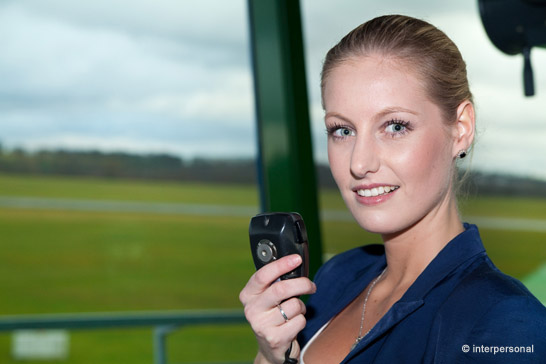
Air Traffic Controller
What do air traffic controllers do?
Air traffic controllers control all flight movement at airports as well as in the air. They keep radio contact to the cockpit crew and communicate in English, the international language of aviation. They assess weather information and support pilots while preparing for and carried out flights. In dangerous and emergency situations such as a loss of radio communications, thunder storms, turbulence, icing or technical malfunctions; they have to react quickly and responsibly. The job of an air traffic controller divides into two paths, the tower and the control centre air traffic controllers. Tower controllers are responsible for air traffic on the runway and in the airspace immediately surrounding the airport. They give the take-off and landing permission, support pilots during preparation and taxiing and coordinate the air traffic using radar as well as with the naked eye.
Control centre traffic controllers are responsible for the Area Control Surveillance. They channel aircrafts over the airways through to the sector borders where the neighbouring control centre can take over. In contrast to tower controllers, control centres work exclusively using radar.
Which requirements do air traffic controllers need to fulfil?
If you want to become an air traffic controller, you need to complete the appropriate three-year training. Applicants for the air traffic controller training programme need to pass an entrance exam and fulfil the following requirements:
- General university entrance exam or similar
- At least 18 years of age
- Proof of medical, mental and psychological suitability.
- Fluent and faultless conversation in English and, when working in Germany, in German too.
- Background check by the Federal Aviation Authority.
Besides this, air traffic controllers need solid skills in mathematics and physics, great spatial sense, very clear language and high power of concentration and retentiveness.
How can I become an air traffic controller?
The three-year long training takes place in full-time at the German Air Navigation Services Academy GmbH (DFS) in Langen. Successfully completing the theoretical training is a prerequisite for admission to the practical part at international airports and control centres of the DFS. During the first thirteen to seventeen months at the Air Navigation Services Academy, prospective air traffic controllers earn around 900 EUR / month. Remuneration for the 18-month internship comes to between 3,300 - 4,900 Euros.
What can air traffic controllers expect in professional life?
Air traffic controllers need to meet very high demands and consistently maintain high concentration. Their spatial imagination and great memory enable them to safely navigate aircrafts through the airspace. Air traffic controllers need to be resilient and act responsibly, as even slight errors can bring serious consequences. They mainly work on various screens and with technical devices. In doing so, they need to work well in a team with pilots, meteorologists and other air traffic controllers. They need to perform well during long shifts, weekends and holidays. Accordingly, air traffic controllers earn a good salary of approx. 6,100 - 8,500 Euros per month.